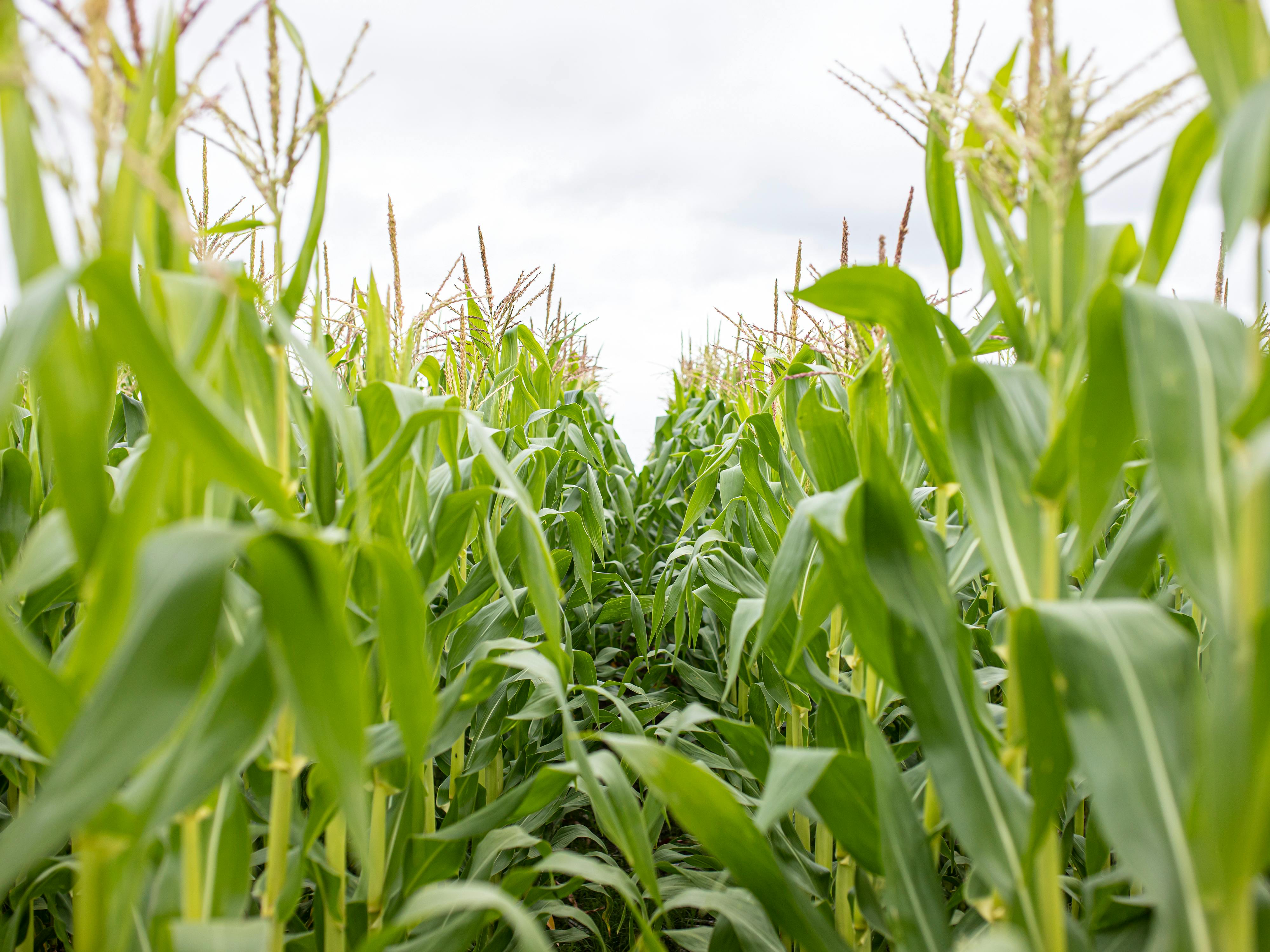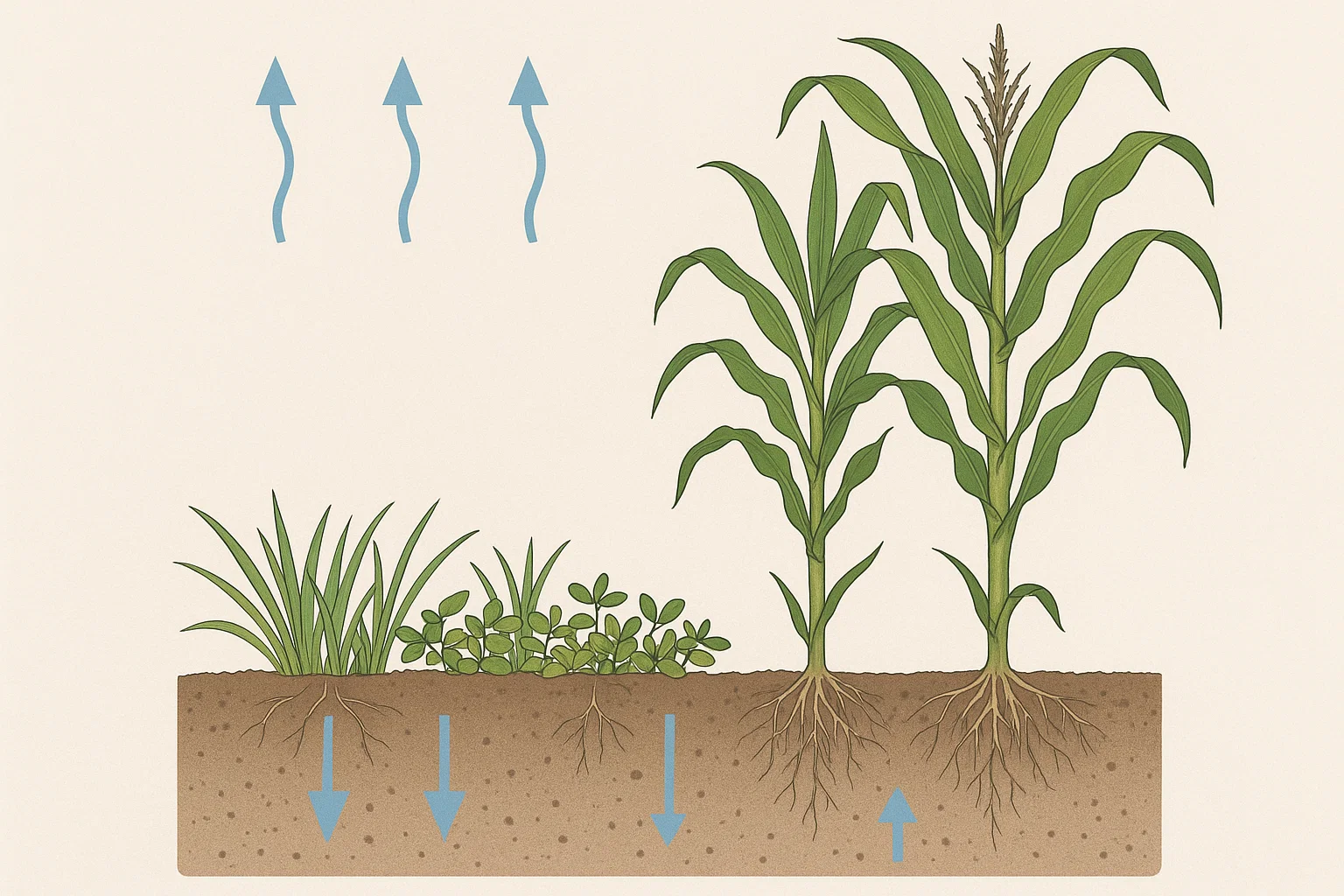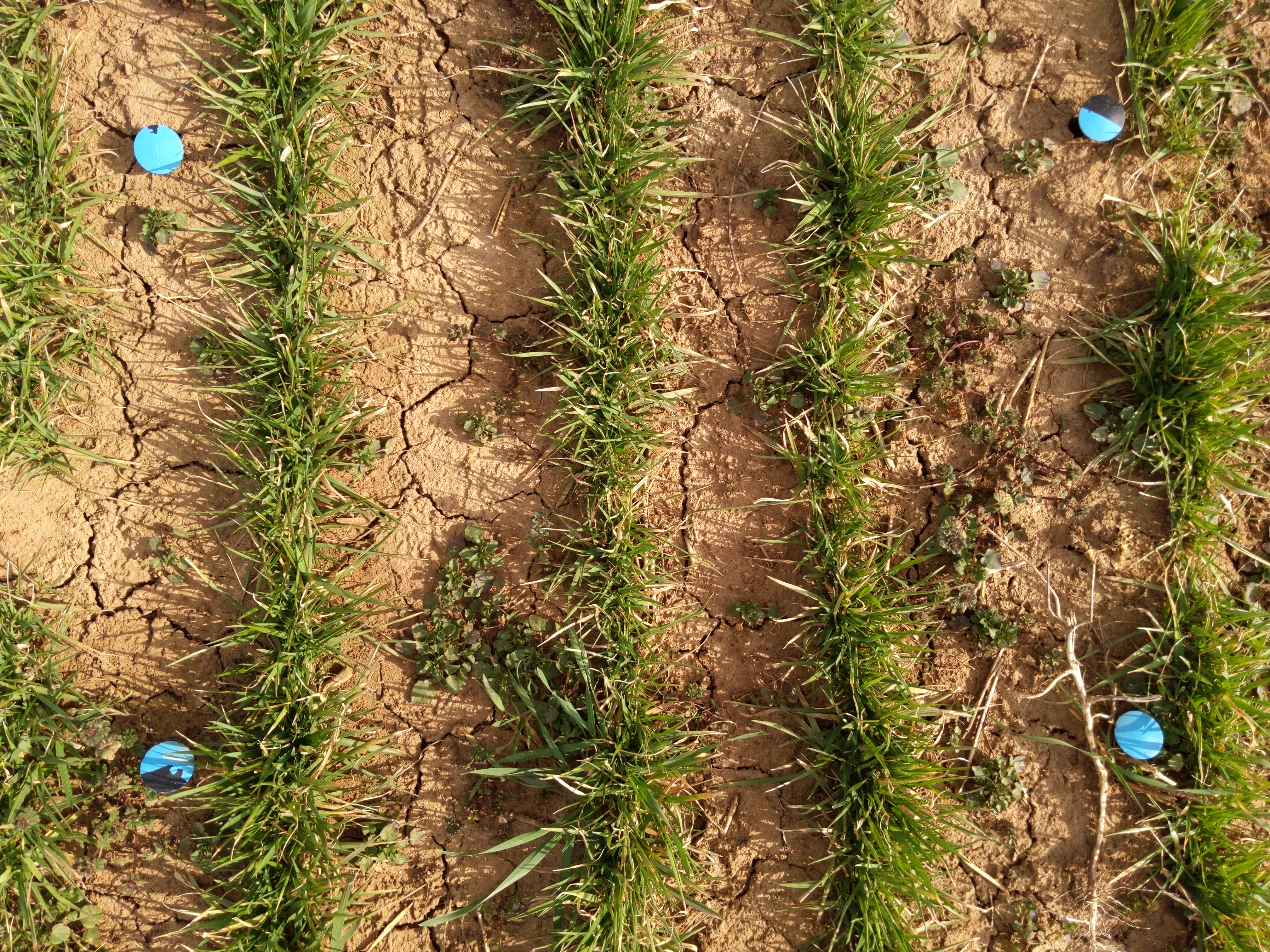Integrating perennial groundcovers (PGC) — sometimes referred to as living mulches or perennial cover crops — into annual cash-crop systems could address root causes of bare-soil practices that lead to negative impacts on soil and water quality. Perennial groundcovers bring otherwise absent functional traits — namely perenniality —into cash-crop systems to preserve soil and regenerate water, carbon, and nutrient cycles. However, if not optimized, they can also cause competitive interactions and yield loss. When designing PGC systems, the goal is to maximize complementarity — spatial and temporal separation of growth and resource acquisition — between PGC and cash crops through both breeding and management. Traits of interest include complementary root and shoot systems, reduced shade avoidance response in the cash-crop, and PGC summer dormancy. Successful deployment of PGC systems could increase both productivity and profitability by improving water- and nutrient-use-efficiency, improving weed and pest control, and creating additional value-added opportunities like stover harvest. Many scientific questions about the inherent interactions at the cell, plant, and ecosystem levels in PGC systems are waiting to be explored. Their answers could enable innovation and refinement of PGC system design for multiple geographies, crops, and food systems, creating a practical and scalable pathway towards resiliency, crop diversification, and sustainable intensification in agriculture.

Increasing productivity without degrading the natural resource base — sustainable intensification — is the defining scientific challenge for 21st-century agriculture. Global food security relies on a diminishing number of annual cash-crop grains, forages, and vegetables. Broad and regional adaptation of these crops and their management systems has allowed dramatic increases in productivity, doubling yields over the past century [1]. However, the land-use change resulting from the conversion of perennial, native ecosystems to intensive annual crop production is causing environmental impacts at a global scale [2,3]. Arguably, the most serious of these is the loss and degradation of soil [4]. Healthy soils are the backbone of sustained crop production [5]. For farmers, soil lost to erosion limits future productivity by disrupting soils’ ability to store and cycle carbon, water, and mineral nutrients. For human societies and the environment, displacement of soil in runoff laden with nutrient-containing sediments and soil-bound agricultural chemicals contaminates consumer water supplies, causes eutrophication of inland waters, and creates hypoxic ocean ‘dead zones.’
Crops and management practices that minimize soil disturbance and increase the proportion and duration of soil covered by living vegetation dramatically reduce soil erosion [2]. Perennial species provide vegetative cover more effectively than annuals, but most opportunities to introduce perennials into cash-cropping systems involve semi-permanent land set-asides (e.g. the US Conservation Reserve Program, perennial grass waterways, or perennial biomass systems). Many farmers and scientists are exploring strategies to increase vegetative cover in annual cash-crop fields. These include: planting annual cover crops in relay with cash-crops, interseeding annual cover crops with cash-crops, and developing perennial grain crops; however, here we focus on perennial groundcover (PGC) crops and cropping systems, an emerging technology for the sustainable intensification of agriculture (Figure 1).
Incorporating low-growing, non-competitive (i.e. ecologically complementary) PGC into cash-crop fields restores continuous vegetative cover without interfering with cash-crop productivity (Figure 1C). The PGC concept is potentially applicable to annual and perennial, organic and conventional, cash-crop production. Perennial groundcovers are already used in orchards[6], have been trialed in vegetable production[7], and could be used with to-be-domesticated crops of the future (e.g. perennial grains or novel plant-based protein crops). However, there is a dire need to develop and deploy robust PGC approaches for dominant grain production systems, especially corn and soybean rotations, whose environmental impacts are oversized because their geographic footprints’ dwarf other cash-crops [8]. Agronomists in the US have been independently working for decades to design PGC-corn production systems using clovers and turfgrasses [9–13]. Research in South America and Africa is further advanced with broad deployment of PGC-corn system variations, namely, the ‘Push-Pull’ system in Kenya for low-input pest management and Integrated Crop-Livestock-Forest systems in Brazil to enhance productivity in depleted soils [14,15]. Regardless of PGC species or location, research routinely demonstrates that PGC delivers reductions in soil erosion, nutrient runoff, and nitrate leaching [16–19]. Corn and soybean yields grown with PGC can be equal to or better than when grown conventionally; however, failure to manage PGC and cash-crops interactions leads to significant yield loss [11,20]. Optimization and widespread adoption of PGC requires generating and leveraging knowledge about the diverse interactions at the cell, plant, and ecosystem levels inherent in these systems.
…
Funding:
This work was made possible through charitable donations given to The Land Institute, Salina, KS. We acknowledge additional funding from the Iowa Nutrient Research Center, the SunGrant Initiative, the US Department of Transportation, and the USDA NIFA AFRI program.



